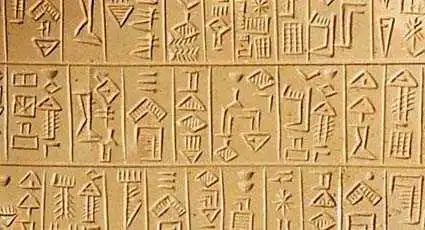
The Logics of Myth 2Basic Patterns of Creation Myths
2 Explanatory and Adventure MythsIf the number of myths of creation from differing cultures and eras are to be analyzed meaningfully, they do first of all have to be structured in some methodical fashion. This has been done elaborately in two ways, to my knowledge — that of Claude Lévi-Strauss in his structural anthropology, and that in the tradition of Carl G. Jung with psychological archetypes. They are similar in concentrating on what myths have to report about human mental needs and reflections on how to come to terms with the harsh reality of existence, also the two methods are applicable to myths of any kind — not just those of creation.
These two similarities diminish the applicability of the methods on myths of creation, for the following reasons:
Certainly, these presuppositions may turn out to be accurate, but that remains to be proven. This cannot be done without also trying to find methods of analysis, adapted to myths according to their theme, if one can be extracted. In the lore of human cultures there are two major types of myths, which are easily detectable, although it is not rare that they intermingle:
Human heroesOf course, there are often human heroes portrayed in the first kind, sometimes even involved in the schemes of things, just as there can be explanatory ingredients in the second kind of myth, so that the adventure of the hero contains events, which do explain why some things are as they are ever since. Still, the main trait of a myth can in most cases be places in one of the two categories, or a change from the one kind to the other can be detected within a myth containing numerous events and large time spans.Myths of creation do unquestionably belong to the first category, in as much as they portray the making of the world, even in those cases where that primal process of events includes the feats of individual heroes in adventurous tidings.
CosmogonyWhen approaching the myth of creation it is important to make yet a clear distinction — that between cosmogony and cosmology. Numerous myths contain more or less elaborate cosmological explanations, stating in what manner different parts of the world function — but if there is no mention of a process leading to this state of things, only a circumstance presented as constantly one and the same, then this is a cosmology, though not a cosmogony. All cosmogony is always cosmology, but only if a beginning of its mechanism is described is a cosmology a cosmogony.
Helios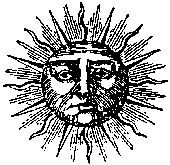 Helios riding his chariot across the sky, bringing daylight to the world, is a cosmological explanation to the solar movement, but only a story of how it was when he started this cyclic ride would be cosmogony. Thus, many of the cosmological ingredients in myths — but not all — lack the story element demanded in criterion one of the six determining what are myths, above. Helios on his chariot is changing night to day and back to night, but in an invariable pattern, not leading to any lasting change. Measured by the six criteria he and his ride must then be labeled a mythical object — of cosmological nature.
Helios riding his chariot across the sky, bringing daylight to the world, is a cosmological explanation to the solar movement, but only a story of how it was when he started this cyclic ride would be cosmogony. Thus, many of the cosmological ingredients in myths — but not all — lack the story element demanded in criterion one of the six determining what are myths, above. Helios on his chariot is changing night to day and back to night, but in an invariable pattern, not leading to any lasting change. Measured by the six criteria he and his ride must then be labeled a mythical object — of cosmological nature.When his son Phaethon, on the other hand, tried to ride the chariot, almost setting fire to earth and himself getting killed in the turmoil, the first criterion is met. This is a myth, and a cosmological one in as much as it states something about celestial mechanics — but a cosmogony it is not, since it says nothing about how these celestial mechanics commenced.
ExcaliburWith these things in mind, we need to make distinctions between different forms of explanatory myths. Some of them cannot be called cosmological at all, say, if they deal solely with how a tribe got to settle in its present habitat or how Arthur found and later lost Excalibur, but all myths with a dominant cosmological content are explanatory. Out of these, some have a clear cosmogony, making them creation myths to a larger or lesser extent. So, all creation myths are cosmological, but the reverse is not always the case.Explanatory myths:
Time and spaceA creation myth, by definition, contains statements about time and space. There is a beginning, and this beginning is taking place somewhere. In cosmological terms, its statement can be opposed to that of a steady state theory, claiming the world to be eternal. In the latter, both time and space exist continuously, with neither beginning nor end, whereas the creation myth may — or may not — have a clear beginning to both. Since a lot of creation myths are rather vague or indefinite about the beginning, a more elaborate definition is needed. When is there enough of a cosmogony present for a myth to be called a creation myth?
Steady stateApproaching it from the opposite direction, a steady state cosmology could be described as one where nothing significant has changed from the past to the present state of the world — concerning its nature and structure. The present, in this case, is that time in which the myth is traditionally told, but in most cases it would work just as well for today. A myth describing a world and world order being basically the same as what is to be presumed at the time when it is told, is not a creation myth. It need not be a steady state myth — only if it states something about the world being ever unchanging — but if it is a cosmological myth and not one of creation, its statement must be of a constant nature, making it reasonable to classify it as a steady state myth.Such a myth risks not passing the first of the six myth criteria — it may not even be a story, since it does not describe a significant change in its main circumstances.
PhaethonWhen Phaethon has his accident with the solar chariot, nothing that happens leads to any change in the cosmological perspective — so, cosmologically speaking, it is not a story at all. To Phaethon himself, though, something happens, his mortal outcome making the change lasting indeed. Therefore, it is a story only if regarded as non-cosmological, thereby not even explanatory, since there is no lasting change to the order of worldly things mentioned. It must be an adventure myth.A myth containing cosmological definitions of a steady state nature, would in every thinkable case mainly be an adventure myth, to be a myth at all — or it would not be much of a story. This is an interesting consequence of the above definitions, since it sheds some light upon the fact that myths containing a steady state cosmology are hard to find — such a world view is hard to make into stories at all. A culture with a firm belief in a steady state world would simply be unlikely to put such a cosmology into myth. The steady state cosmology cannot be a myth, but it can — passing all of the six criteria but the first — be a mythical object, a cosmological component in a myth, which would then either be an explanatory myth dealing with other matters than cosmological ones, or an adventure myth.
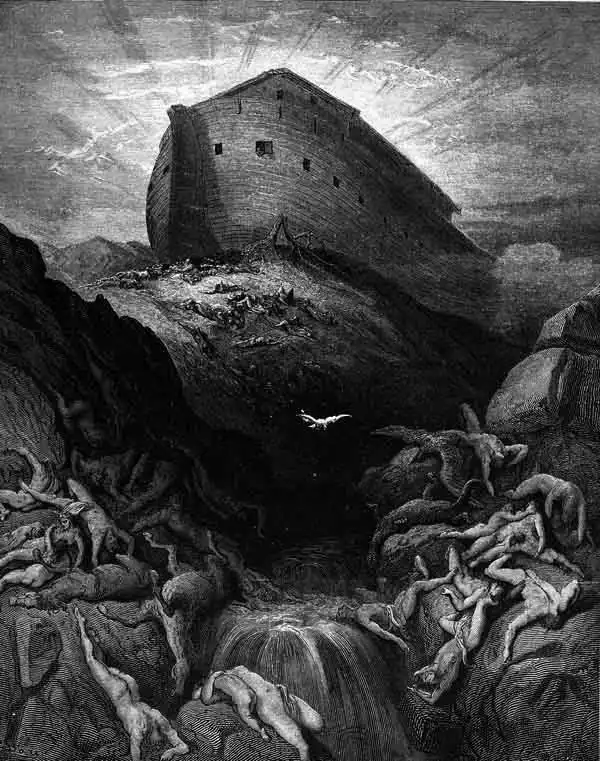 The dove sent out from Noah's ark. Bible illustration by Gustave Doré,1866. NoahThen, all cosmological myths have to deal with a significantly changing world — not necessarily with an absolute beginning or end, but with major changes happening to the world order. A good example of this would be the story of Noah and the flood. The world changes drastically, and after the flood a new deal is introduced, of which the rainbow is a confirmation, but a beginning of the world it is not. There are numerous similar flood myths found in different parts of the world, and they are frequently compared to — even classified as — creation myths. In the case of Noah this would be unthinkable, since Genesis in its first verses presents the biblical creation, but in a mythological tradition where a creation myth preceding the flood myth is not known, the classification makes more sense, although still questionable.A creation myth would need to state something about an event being first, having nothing happening to the world before it. The cosmological change in the myth has to be of primary nature. When God washed the world by flooding it, or when He destroyed the tower of Babel and dispersed humankind by making people speak different tongues, none of these changes were of primary nature. Significant changes to the world had preceded these.
World changeThen, it can be said about cosmological myths that all of them contain world change, and some of them contain primary world change. Even if these myths of primary world changes do not explicitly tell about the creation of the whole world, they can be called creation myths, since a primary change with a significant and lasting effect on the world must be said to deal with its creation.So, all cosmological myths are myths of change in the world order, and of those some are myths of primary change of world order. All creation myths are myths of primary change of world order, and vice versa. Then we have a definition for creation myths, relating to the criteria and classifications given above: creation myths are myths of primary world change. The narrowing down to creation myths can be made in this manner: What stories are creation myths:
NextDramaturgy in creation mythsThe Logics of MythBasic Patterns of Creation Myths
This article was originally written in 1999 for a seminar at the Department of History of Ideas, Lund University, as a part of my dissertation in progress on Creation Myths and their patterns of thought. Published on the web on September 6, 2001.
MENUCreation Myths Around the WorldHow stories of the beginning began.
The Meanings of MythologyTheories through history about myth and fable.
Archetypes in MythsThe mythological symbols and what they stand for.
The Logics of MythPatterns of creation.
CREATION MYTHS IN DEPTHCreation in Rig Veda 10:129The paradox of origin, according to an Indian myth.
Genesis 1The first creation story of the bible scrutinized.
Enuma ElishThe ancient Babylonian creation myth.
Xingu Creation of ManThe insoluble solitude of gods and humans.
ContactAbout Cookies
ON MY OTHER WEBSITESPsychoanalysis of MythWhat Sigmund Freud and C. G. Jung thought about myths, their origins and meanings.
Myth of CreationAn introduction to the subject of creation myths and the patterns of thought they reveal.
Cosmos of the AncientsWhat the Greek philosophers believed about the cosmos, their religion and their gods.
Life EnergyThe many ancient and modern life force beliefs all over the world explained and compared.
TaoisticTaoism, the ancient Chinese philosophy of life explained. Also, the complete classic text Tao Te Ching online.
|
 Archetypes of Mythology
Archetypes of Mythology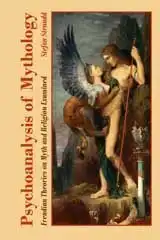 Psychoanalysis of Mythology
Psychoanalysis of Mythology Cosmos of the Ancients
Cosmos of the Ancients Life Energy Encyclopedia
Life Energy Encyclopedia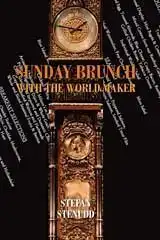 Sunday Brunch with the World Maker
Sunday Brunch with the World Maker Fake Lao Tzu Quotes
Fake Lao Tzu Quotes Stefan Stenudd
Stefan Stenudd